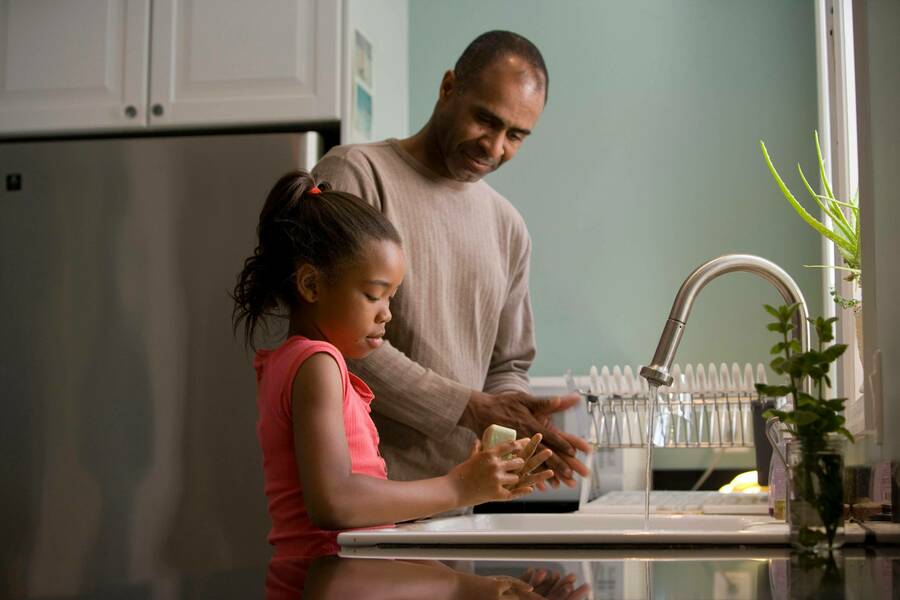Heartland Human Care Services Bundled Rapid Re-Housing Program

Locations
Focus Area
- Housing
“Society benefits when all people can participate, prosper, and reach their full potential. We will not give up until everyone is able to exit poverty, heal from trauma, achieve stability, and shape the policies that affect their lives.”
The Issue
Homelessness is both a cause and one of the most dire outcomes of poverty. More than 580,000 people experienced homelessness in 2020. Ask any of them how they came to be homeless and you will likely hear about a complicated web of interconnected factors--a sudden job loss, untreated health issues, a divorce, unexpected expenses that drained the savings account….and then some. A further 11.4 million households are considered “severely cost burdened,” which means they spend more than 50% of their income on housing. With such a tight household budget, even a small financial shock can translate to missed rent payments and eviction. And falling into homelessness can cause a whole host of new problems--disruptions to children’s schooling, involvement with the justice system, trouble finding or keeping a job, and even teen pregnancy.
Rapid rehousing (RRH) is one popular strategy for helping families who have fallen into homelessness. Designed to be a short-term stop on their journey from a homeless shelter to a permanent home, RRH combines housing subsidies with case management to help the family stabilize before moving on. As participants find work and increase their income, their monthly subsidy shrinks and they are responsible for assuming a greater share of the rent, in preparation for making it on their own.
However, RRH is only a temporary means of addressing homelessness and families become ineligible for continued services after 24 months. While RRH can grant a family security for today, escaping homelessness for good can be difficult to achieve without comprehensive and long-term services that are beyond the scope of RRH.
But these comprehensive services can be hard to tap into. Many social service programs are built to address just one issue. But families experiencing homelessness juggle numerous complex, co-occurring issues. And they are often left on their own to try to piece together the right assistance to get back on their feet, navigating the logistical hurdles of working with multiple staff across multiple organizations...all while trying to meet their family’s needs for today and plan a more stable future.
RRH is a good start, but more comprehensive approaches are needed to equip people with everything they need to avoid falling back into homelessness in the future. For a family to maintain stable housing and thrive in other areas of their lives after 24 months of RRH services, it’s important that other needs, such as finding employment and building assets, are also addressed. Effective homelessness interventions must help a family develop stability for the long-term
The Intervention
Chicago’s Heartland Human Care Services developed a new RRH model aimed at ensuring clients are set up for success on multiple fronts. The intervention bundles traditional RRH with employment services and asset-building support that, together, can guide a family to long-term stability. The housing provided by RRH helps meet the needs of today. Employment services give wage earners the tools to generate income that will keep them from falling back into homelessness. And understanding how to build and manage household assets allows families to plan for the future. Clients in the program work with three case managers, each specializing in one program area but working as a coordinated team to provide each family the unique assistance they need. Purposefully integrating these services allows the case managers to holistically support the whole family.
Research Question
Does combining rapid rehousing programs with asset building and employment services improve outcomes and allow for more housing stability in the future?
Intended Outcomes
- Clients who receive bundled RRH services will be more likely to find stable, permanent housing.
- They will also have improved employment, earnings, credit scores, and benefit utilization.
Research Study Design
LEO’s study of Heartland’s bundled RRH program is a randomized controlled trial. Because Heartland doesn’t have enough capacity to offer bundled services to all of its RRH clients, a random lottery is used to determine who enters the program. Families who enter Heartland’s traditional RRH services and consent to the research study are entered into the lottery. Those who are randomly selected for the bundled RRH services become part of the treatment group and receive employment and asset-building support. Those who are not randomly selected for the bundled program continue to receive traditional RRH services and are part of the control group.
At the conclusion of the study, LEO’s researchers will compare the two groups to learn about the impact the bundled services have on a family’s housing stability, earnings, credit scores, and employment.